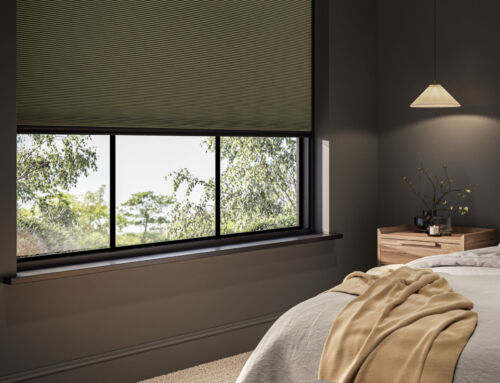Deciding on the ideal window treatments for your home can be a daunting task, especially with countless options available. Blinds are a popular choice for many homeowners due to their versatility, ease of use, and ability to enhance the overall aesthetic of any room. As experts in the field, we understand the importance of selecting blinds that not only meet your functional needs but also align with your personal taste and style preferences.
Choosing the right material for your blinds is another essential factor to consider. From fabric and wood to aluminium and PVC, blind materials can vary greatly, each offering its distinct advantages and disadvantages. When selecting the material, consider factors such as durability, maintenance ease, and overall appearance. Keep in mind that different materials may also impact the insulation and light control properties of your blinds.
Understanding Different Types of Blinds
Now that we’ve covered the essential factors to consider, let’s dive into the various types of blinds available to help you make a well-informed decision. Here are some of the most popular options:
- Roller Blinds: A versatile and cost-effective choice, roller blinds consist of a single piece of fabric attached to a roller mechanism. They can seamlessly blend with most interior design styles, whether modern or traditional. Roller blinds are available in a wide variety of colours, patterns, and fabric types, offering light filtering, blackout, or even energy-saving features.
- Venetian Blinds: These timeless favourites feature horizontal slats made from materials like wood, aluminium, or PVC. You can easily control the amount of light and privacy by adjusting the slats’ angle. Venetian blinds are suitable for any room in your home, and their elegant design adds a refined touch to your space.
- Vertical Blinds: As the name suggests, vertical blinds consist of vertical slats, usually made of fabric, PVC, or faux wood. Ideal for large windows or patio doors, they offer excellent light and privacy control while adding a unique visual appeal to the room.
- Roman Blinds: A sophisticated option, Roman blinds are made of fabric that gracefully folds when raised, creating a cascading effect. These elegant blinds are perfect for living rooms, bedrooms, or dining areas and come in various fabric choices, allowing you to add a touch of luxury to your home.
- Pleated Blinds: Made of pleated fabric, these blinds give a clean, crisp look to your windows. They’re an excellent choice for conservatories, as they offer excellent insulation, helping you maintain a comfortable temperature year-round.
Choosing the Perfect Material
Each blind material has specific properties and advantages, so it’s crucial to think about the overall benefits and considerations of each option. Here are some popular materials used in modern blinds:
- Fabric: Available in countless colours, textures, and patterns, fabric blinds can easily coordinate with existing decor. Many fabric blinds provide excellent insulation and light control, depending on the fabric type and treatment. However, certain fabrics can be prone to fading and may require a bit of maintenance to keep them looking fresh.
- Wood: Wooden blinds offer a timeless, natural elegance and are ideal for traditional or rustic interior styles. They’re durable, energy-efficient, and provide excellent privacy and light control. Keep in mind that real wood blinds may not be suitable for damp or humid environments, like kitchens or bathrooms, as they can warp or crack over time.
- Faux Wood: This alternative mimics the appearance and warmth of real wood blinds while offering increased resistance to moisture and warping. Faux wood blinds are perfect for areas with high humidity, such as bathrooms and kitchens, and require less maintenance than genuine wood.
- Aluminium: Lightweight and durable, aluminium blinds are available in a variety of colours and finishes. They’re also easy to clean and maintain, with slats that can be easily adjusted for light control and privacy. Aluminium blinds, however, might not offer the same level of insulation as other materials.
- PVC: These affordable blinds are highly resistant to moisture and humidity, making them perfect for bathrooms, kitchens, or utility rooms. They’re also easy to clean and maintain, but their insulation properties may not be as effective as those of other materials.
Measuring and Installation
Precise measurements are crucial for a polished, professional result. While measuring your windows may seem daunting, accurate dimensions will ensure your blinds fit perfectly and operate smoothly. You can opt for an inside or outside mount, depending on your window type and personal preference. Always follow the manufacturer’s instructions or consult with a professional installer to guarantee a seamless installation.
Accessorising and Customising Your Blinds
Once you’ve made your decision, you can further personalise your blinds by selecting from various accessories and customisation options. From stylish curtain poles to decorative cords and tassels, these finishing touches can add visual interest, functionality, and a hint of your unique style.
Conclusion
Choosing the perfect blinds for your home doesn’t have to be a complicated process. By understanding the various types of blinds, materials, and functionality, you can confidently make a decision that meets your needs and complements your personal style. Always consider the room’s purpose, decor, and lifestyle, and consult with professionals for advice or installation if necessary.
Contact Shady Blinds today for top-quality blinds in Warwickshire. Let our experienced team provide you with expert installations and exceptional products to transform your living space with tailor-made blinds.






Leave A Comment